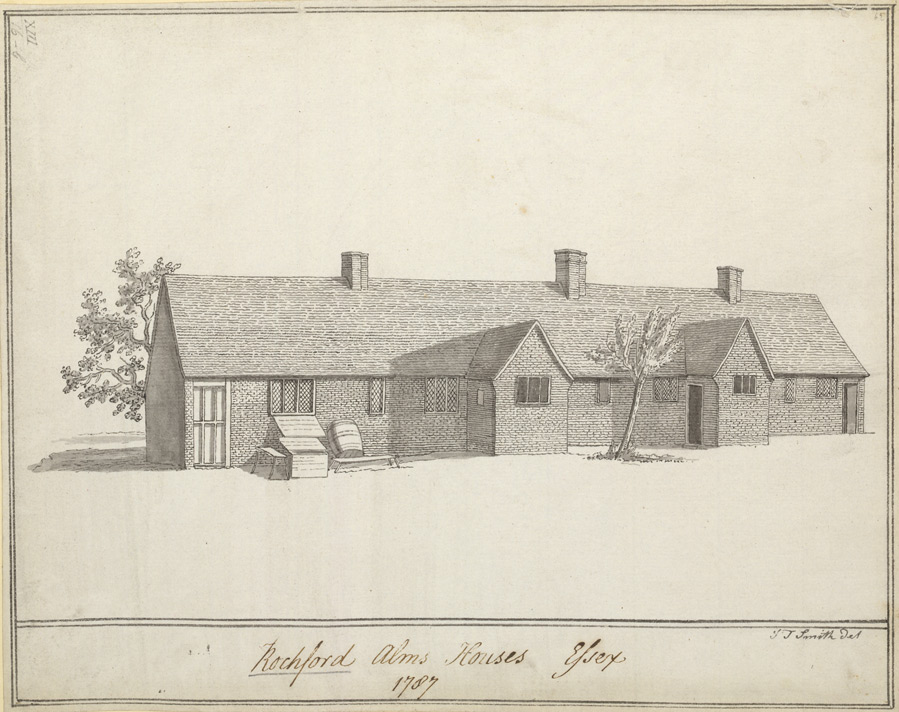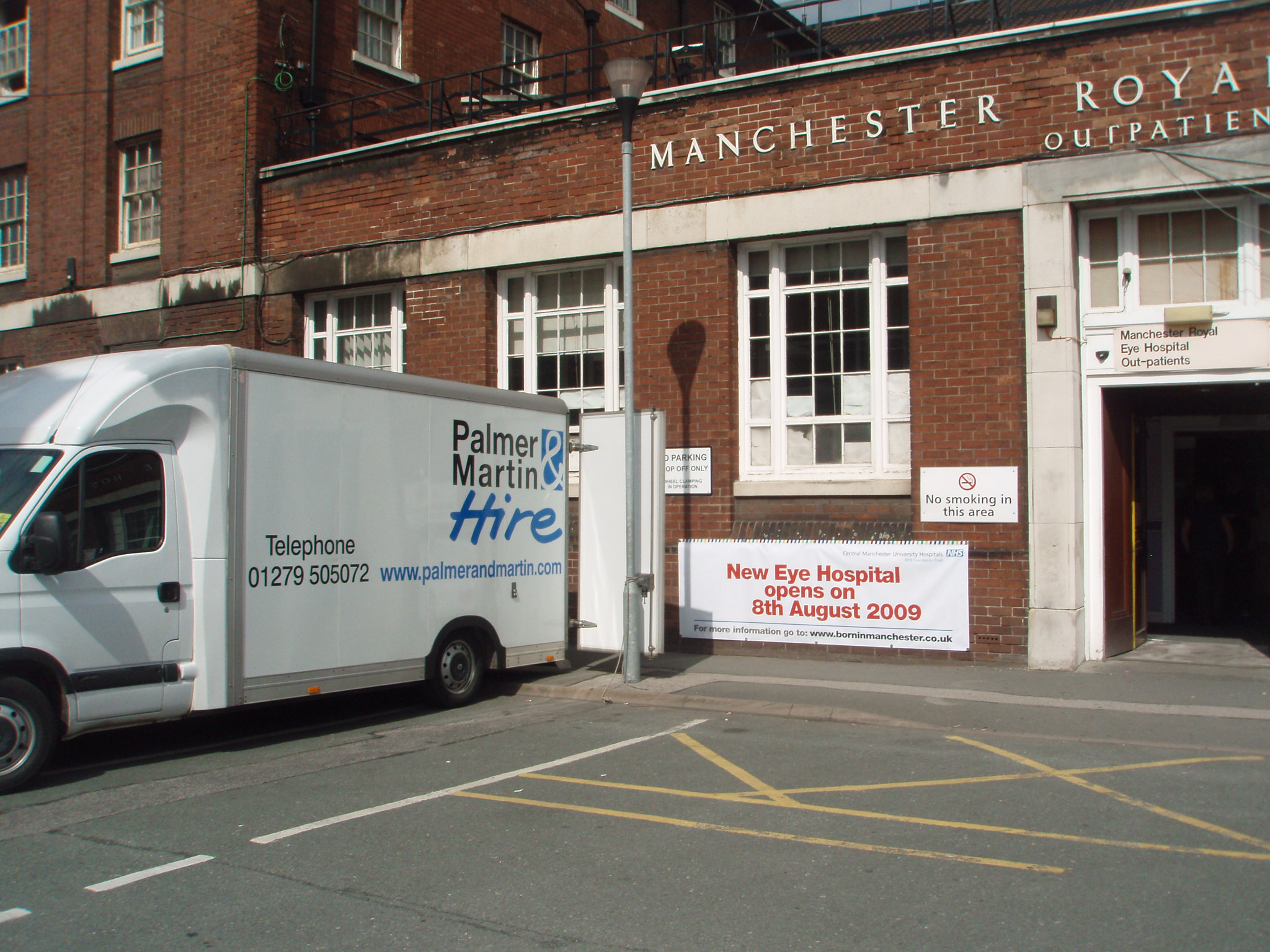|
Eleanora Atherton
Eleanora Atherton (14 February 1782 – 12 September 1870) was an English philanthropist best known for her work in Manchester, England. At the time of her death, she was one of the richest British women in the nineteenth century. Life Atherton was born on 14 February 1782 and baptised in Manchester Cathedral on the 21 March 1782, the daughter of Henry Atherton (1740–1816), a Preston born barrister of Lincoln's Inn, and Ann Byrom (1751–1826), the great-granddaughter of the poet, John Byrom. Her education is an unknown, although we know she grew up in an intellectual environment and did not live an ostentatious lifestyle or travel overseas. Atherton donated to many philanthropic organisations within the Manchester area, and beyond. Specifically those that aided the living conditions of the young and the sick, and the elderly, which was often channeled through entities that shared her Anglican faith. Atherton carried on her maternal family tradition of church building and ... [...More Info...] [...Related Items...] OR: [Wikipedia] [Google] [Baidu] |
Quay Street
Quay Street is a street in the city centre of Manchester, England. The street, designated the A34, continues Peter Street westwards towards the River Irwell and Salford. It is the northern boundary of Spinningfields, the city's business district and Castlefield, the historical area of the city lies to the south. Quay Street was created in the 18th century for access to a quay on the river and is lined by several listed buildings. Edward Byrom built a quay on the River Irwell in the 1730s and the street was built to link it to Deansgate which was then known as Aldport Lane. In 1794 it was extended eastwards to Mosley Street. Richard Cobden's red brick townhouse, built in the Georgian style was the first home of Owens College and afterwards Manchester County Court. It is a Grade II* listed building. In the 1840s Harry Stokes, Manchester's 'female husband', ran a beerhouse at numbers 3 - 5 Quay Street. The Hospital for Skin Diseases was in Quay Street. The Opera House, formerl ... [...More Info...] [...Related Items...] OR: [Wikipedia] [Google] [Baidu] |
Caribbean
The Caribbean (, ) ( es, El Caribe; french: la Caraïbe; ht, Karayib; nl, De Caraïben) is a region of the Americas that consists of the Caribbean Sea, its islands (some surrounded by the Caribbean Sea and some bordering both the Caribbean Sea and the North Atlantic Ocean) and the surrounding coasts. The region is southeast of the Gulf of Mexico and the North American mainland, east of Central America, and north of South America. Situated largely on the Caribbean Plate, the region has more than 700 islands, islets, reefs and cays (see the list of Caribbean islands). Island arcs delineate the eastern and northern edges of the Caribbean Sea: The Greater Antilles and the Lucayan Archipelago on the north and the Lesser Antilles and the on the south and east (which includes the Leeward Antilles). They form the West Indies with the nearby Lucayan Archipelago ( the Bahamas and Turks and Caicos Islands), which are considered to be part of the Caribbean despite not borde ... [...More Info...] [...Related Items...] OR: [Wikipedia] [Google] [Baidu] |
Almshouse
An almshouse (also known as a bede-house, poorhouse, or hospital) was charitable housing provided to people in a particular community, especially during the medieval era. They were often targeted at the poor of a locality, at those from certain forms of previous employment, or their widows, and at elderly people who could no longer pay rent, and are generally maintained by a charity or the trustees of a bequest ( alms are, in the Christian tradition, money or services donated to support the poor and indigent). Almshouses were originally formed as extensions of the church system and were later adapted by local officials and authorities. History Many almshouses are European Christian institutions though some are secular. Almshouses provide subsidised accommodation, often integrated with social care resources such as wardens. England Almshouses were established from the 10th century in Britain, to provide a place of residence for poor, old and distressed people. They were som ... [...More Info...] [...Related Items...] OR: [Wikipedia] [Google] [Baidu] |
Ragged School
Ragged schools were charitable organisations dedicated to the free education of destitute children in 19th century Britain. The schools were developed in working-class districts. Ragged schools were intended for society's most destitute children. Such children, it was argued, were often excluded from Sunday School education because of their unkempt appearance and often challenging behaviour. The London Ragged School Union was established in April 1844 to combine resources in the city, providing free education, food, clothing, lodging and other home missionary services for poor children. Although the London Ragged School Union did not extend beyond the metropolis, its publications and pamphlets helped spread ragged school ideals across the country. They were phased out by the final decades of the 19th century. Working in the poorest districts, teachers (who were often local working people) initially utilized stables, lofts, and railway arches for their classes. The majority of teac ... [...More Info...] [...Related Items...] OR: [Wikipedia] [Google] [Baidu] |
Manchester Royal Eye Hospital
Manchester Royal Eye Hospital is an ophthalmic hospital in Oxford Road, Manchester, England, managed by the Manchester University NHS Foundation Trust. It is on the same site as Manchester Royal Infirmary and St Mary's Hospital for Women and Children. History The hospital was founded in 1814 on the initiative of William James Wilson and opened in King Street the following year. It moved to Faulkner Street in 1827, to Princess Street in 1874 and to St John's Street in 1882, before re-locating to a facility designed by Pennington & Bridgen in Oxford Road which was built between 1884 and 1886. The building was damaged by a large bomb in the German air raid on 23 December 1940. A doctor and a nurse were killed. The building became Grade II listed in 1974 and has since been converted for other uses. Services moved to a new building on the Royal Infirmary site accessible to patients in 2009 and officially opened by the Queen in 2012. Meanwhile, a new biomedical centre, Citylabs, w ... [...More Info...] [...Related Items...] OR: [Wikipedia] [Google] [Baidu] |
Saint Mary's Hospital, Manchester
Saint Mary's Hospital is a hospital in Manchester, England. It is part of Manchester University NHS Foundation Trust. Founded in 1790, St Mary's provides a range of inter-related services specifically for women and children. History The hospital was founded in 1790 by Dr Charles White in a house in Old Bridge Street, Salford, as the "Lying-in Charity". Five years later in 1795 the charity became the Manchester Lying-in Hospital; it was accommodated however in the Bath Inn, Stanley Street, Salford. Midwifery training for women was provided from the beginning. The building was felt to be very suitable. The bar was used as the apothecary's shop. Inpatient accommodation was available for widows, deserted wives, and those whose homes were unsuitable. 80 were admitted in 1791/92. In 1799/1800 there were 177 and 800 home patients. The charity maintained a list of midwives, who were paid two shillings and sixpence for each delivery. In 1819 it moved to smaller premises at 18 King Stree ... [...More Info...] [...Related Items...] OR: [Wikipedia] [Google] [Baidu] |
St John's Church, Manchester
St John's Church, Manchester, also known as St John's, Deansgate, was an Anglican parish church in Manchester, England, established in 1769 and demolished in 1931. Its site is now that of St John's Gardens, situated between Lower Byrom Street, Byrom Street and Quay Street. St John's Church was built in 1769 by Edward Byrom, a co-founder of the first bank in Manchester. Its parish encompassed a large and important section of the city of Manchester. The first rector, John Clowes, held the office for 62 years until his death in 1831. Clowes preached the first Sunday school sermon in the Manchester area, introduced Swedenborgianism there and was prominent in championing Whit Walks. Clowes was succeeded by William Huntington, who had held the post of curate since 1826 and continued as rector until his death in 1874. Huntington established the Sunday school, for which he laid the foundation stone in 1827. In 1906, around 250 children attended the Sunday school and the church had ... [...More Info...] [...Related Items...] OR: [Wikipedia] [Google] [Baidu] |
Hulme, Manchester
Hulme () is an inner city area and electoral ward of Manchester, England, immediately south of Manchester city centre. It has a significant industrial heritage. Historically in Lancashire, the name Hulme is derived from the Old Norse word for a small island, or land surrounded by water or marsh, indicating that it may have been first settled by Norse invaders in the period of the Danelaw. History Toponymy Hulme derives its name from the Old Norse ''holmr, holmi'', through Old Danish ''hulm'' or ''hulme'' meaning small islands or land surrounded by streams, fen or marsh. Ekwall, Eilert ''The Place-Names of Lancashire'' (1922, The University Press, Lime Grove, Manchester) The area may have fitted this description at the time of the Scandinavian invasion and settlement as it is surrounded by water on three sides by the rivers Irwell, Medlock and Corn Brook. Ekwall suggested that the considerable number of Danish names to the south and south-west of Manchester, unparallele ... [...More Info...] [...Related Items...] OR: [Wikipedia] [Google] [Baidu] |
Holy Trinity, Hulme
Holy Trinity was an Anglican parish church built in Hulme, Manchester in 1841 to a design by George Gilbert Scott and S. Moffat. Construction cost around £18,000 and was funded by Eleanora Atherton, the granddaughter of Edward Byrom, who had himself founded St John's Church, Manchester. The church was on Stretford Road, to the east of Hulme town hall. The hammer-beam roof was decorated with plaster angels painted to resemble wood. The church was considered a good composition by ''The Builder''. Scott used the same design for six other churches.Stewart, Cecil (1956). ''The Stones of Manchester''. London: Edward Arnold; pp. 52 & 60 Partially damaged by bombing in World War II, it was demolished in 1953. See also *List of churches in Greater Manchester This is a partial list of churches in Greater Manchester, North West England, North West England, split according to metropolitan district. There is a mixture of Christian denominations in Greater Manchester, including Church (b ... [...More Info...] [...Related Items...] OR: [Wikipedia] [Google] [Baidu] |
Slavery
Slavery and enslavement are both the state and the condition of being a slave—someone forbidden to quit one's service for an enslaver, and who is treated by the enslaver as property. Slavery typically involves slaves being made to perform some form of work while also having their location or residence dictated by the enslaver. Many historical cases of enslavement occurred as a result of breaking the law, becoming indebted, or suffering a military defeat; other forms of slavery were instituted along demographic lines such as Racism, race. Slaves may be kept in bondage for life or for a fixed period of time, after which they would be Manumission, granted freedom. Although slavery is usually involuntary and involves coercion, there are also cases where people voluntary slavery, voluntarily enter into slavery to pay a debt or earn money due to poverty. In the course of human history, slavery was a typical feature of civilization, and was legal in most societies, but it is no ... [...More Info...] [...Related Items...] OR: [Wikipedia] [Google] [Baidu] |
Humphrey Chetham
Humphrey Chetham (10 July 1580 – 1653) was an English textile merchant, financier and philanthropist, responsible for the creation of Chetham's Hospital and Chetham's Library, the oldest public library in the English-speaking world.Crosby 2008. Life Chetham was born in Crumpsall, Lancashire, England, the son of Henry Chetham, a successful Manchester merchant who lived in Crumpsall Hall and his wife, Jane (c.1542–1616), the daughter of Robert Wroe of Heaton. He was educated at Manchester Grammar School, and in 1597 was apprenticed to Samuel Tipping, a Manchester linen draper. In 1605, he moved to London with his brother George and set up a partnership with him trading in various textiles. The business was successful, since the fabric was bought in London and sold for a higher price in Manchester. He acquired Clayton Hall in Manchester as his home, and in 1628 was also able to buy Turton Tower from William Orrell. In 1631, he was asked to be knighted after his huge wealt ... [...More Info...] [...Related Items...] OR: [Wikipedia] [Google] [Baidu] |
Whiston, Merseyside
Whiston is a town and civil parish within the Metropolitan Borough of Knowsley in Merseyside, England. Previously recorded within the historic county of Lancashire, it is located east of Liverpool. The population was 13,629 at the 2001 Census, increasing to 14,263 at the 2011 Census. A new village, Halsnead Garden Village, was approved with government support in 2017 and will be located in the Halsnead area of the town. The new village will contain over 1,500 houses, a primary school, a country park, and various community and leisure facilities. Construction is estimated to cost around £270 million. History The first record of Whiston comes in 1245, being rendered as "Quistan" and being within the West Derby Hundred in Lancashire. Archeological evidence such as a neolithic polished hand-axe and mesolithic tool fragments suggest that the region was host to pre-historic settlement up to 12,000 years, ago while other archaeological finds include remnants of a Roman tile work ... [...More Info...] [...Related Items...] OR: [Wikipedia] [Google] [Baidu] |








